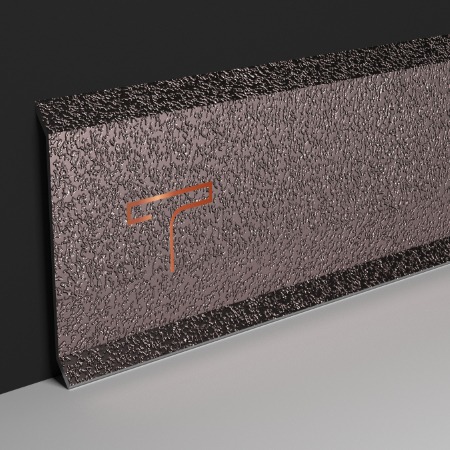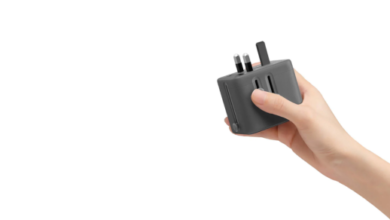Stainless Steel Skirting Profiles – A Comprehensive Guide

Stainless steel skirting profiles have become an integral part of modern architectural design, providing both functional and aesthetic benefits. These profiles not only protect the base of walls from damage but also enhance the visual appeal of interiors. In this article, we will delve into the various aspects of stainless steel Skirting Profiles, exploring their benefits, applications, types, installation process, and maintenance.
Benefits of Stainless Steel Skirting Profiles
Stainless steel skirting profiles offer a multitude of advantages that make them a preferred choice in both residential and commercial spaces.
1. Durability and Longevity
Stainless steel is renowned for its durability and resistance to corrosion. Unlike other materials, stainless steel skirting profiles can withstand harsh environmental conditions, making them suitable for areas with high moisture or chemical exposure. This longevity ensures that the skirting profiles remain intact and aesthetically pleasing for years.
2. Aesthetic Appeal
The sleek and modern look of stainless steel skirting profiles adds a touch of elegance to any interior. They seamlessly blend with contemporary design themes, providing a polished finish that enhances the overall aesthetic of the space. The reflective surface of stainless steel can also create an illusion of more space, making rooms appear larger and brighter.
3. Hygiene and Cleanliness
Stainless steel is easy to clean and maintain, making it an ideal choice for spaces that require high hygiene standards, such as kitchens, hospitals, and laboratories. Its non-porous surface prevents the accumulation of dirt, bacteria, and other contaminants, ensuring a clean and sanitary environment.
4. Protection
One of the primary functions of skirting profiles is to protect the lower part of walls from damage caused by furniture, cleaning equipment, and foot traffic. Stainless steel skirting profiles provide robust protection against these impacts, preserving the integrity of the walls and reducing maintenance costs.
Applications of Stainless Steel Skirting Profiles
Stainless steel skirting profiles are versatile and can be used in various settings, including:
1. Residential Spaces
In homes, stainless steel skirting profiles are often used in kitchens, bathrooms, and hallways. Their resistance to moisture and easy-to-clean properties make them ideal for these high-traffic and high-moisture areas.
2. Commercial Buildings
In commercial spaces such as offices, retail stores, and restaurants, stainless steel skirting profiles provide a professional and clean look. They are particularly useful in areas with heavy foot traffic, where durability and low maintenance are essential.
3. Industrial Settings
In industrial environments, stainless steel skirting profiles are used to protect walls from damage caused by machinery and equipment. Their resistance to chemicals and ease of cleaning make them suitable for factories, laboratories, and other industrial facilities.
Types of Stainless Steel Skirting Profiles
There are several types of stainless steel skirting profiles available, each designed to meet specific needs and preferences.
1. Flat Skirting Profiles
Flat skirting profiles are simple and sleek, providing a minimalist look. They are easy to install and clean, making them a popular choice for modern interiors.
2. Coved Skirting Profiles
Coved skirting profiles feature a curved design that allows for seamless transitions between the floor and walls. This type is particularly useful in spaces that require easy cleaning, as it prevents dirt and debris from accumulating in corners.
3. Recessed Skirting Profiles
Recessed skirting profiles are installed flush with the wall, creating a smooth and continuous surface. This type is ideal for spaces where a clean and unobtrusive look is desired.
4. Illuminated Skirting Profiles
Illuminated skirting profiles incorporate LED lighting, adding an extra layer of functionality and aesthetic appeal. These profiles can be used to create ambient lighting effects, enhancing the atmosphere of the space.
Installation Process
Installing stainless steel skirting profiles is a straightforward process that can be completed with basic tools and materials. Here is a step-by-step guide:
1. Measure and Cut
Measure the length of the walls where the skirting profiles will be installed. Cut the profiles to the required length using a saw suitable for cutting metal.
2. Prepare the Surface
Ensure that the surface where the skirting profiles will be installed is clean, dry, and free of any debris. This will ensure a secure and long-lasting installation.
3. Apply Adhesive
Apply a high-quality adhesive to the back of the skirting profiles. Be sure to use an adhesive that is suitable for bonding metal to the wall surface.
4. Install the Profiles
Press the skirting profiles firmly against the wall, starting from one end and working your way to the other. Ensure that the profiles are aligned correctly and make any necessary adjustments before the adhesive sets.
5. Secure with Screws
For additional stability, you can secure the skirting profiles with screws. Drill pilot holes through the profiles and into the wall, then insert the screws and tighten them.
6. Finishing Touches
Wipe away any excess adhesive and ensure that the profiles are clean and free of fingerprints or smudges. Allow the adhesive to cure fully before subjecting the profiles to any stress.
Maintenance Tips
Maintaining stainless steel skirting profiles is relatively easy, but following a few simple tips can help ensure they remain in pristine condition:
1. Regular Cleaning
Clean the profiles regularly with a mild detergent and a soft cloth to remove dirt and grime. Avoid using abrasive cleaners or tools that can scratch the surface.
2. Avoid Harsh Chemicals
While stainless steel is resistant to many chemicals, it is best to avoid using harsh cleaning agents that can cause discoloration or damage to the finish.
3. Polish Periodically
To maintain the shine and luster of the stainless steel, polish the profiles periodically with a stainless steel polish. This will also help to remove any minor scratches and keep the profiles looking new.
4. Inspect for Damage
Regularly inspect the skirting profiles for any signs of damage or wear. Address any issues promptly to prevent further damage and ensure the longevity of the profiles.
Stainless steel skirting profiles are a versatile and durable choice for enhancing the functionality and aesthetic of any space. With their numerous benefits, wide range of applications, and easy maintenance, they are an excellent investment for both residential and commercial properties.


